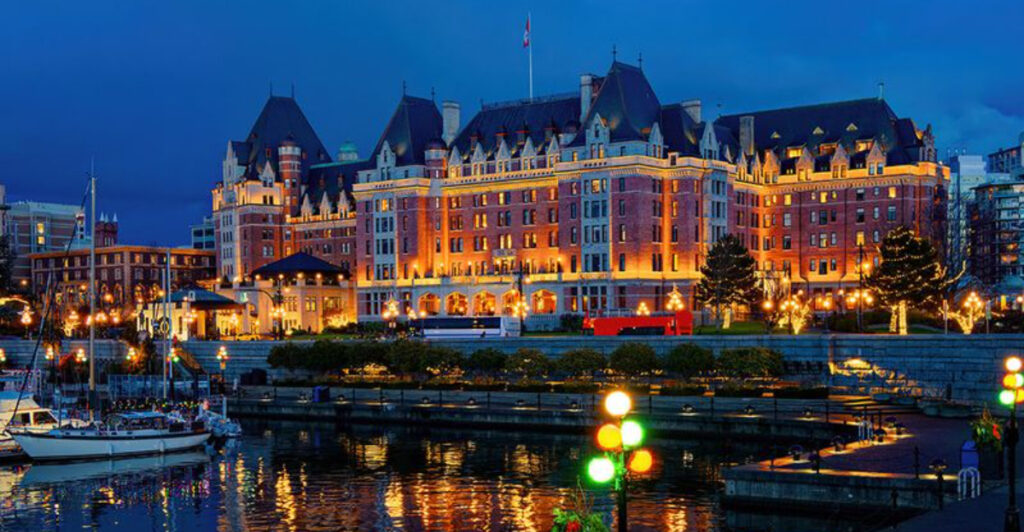Cities around the world captivate us with their unique blend of architecture, culture, and natural surroundings. From ancient capitals perched on hillsides to modern metropolises with cutting-edge design, certain urban centers consistently leave travelers awestruck. Based on rankings from leading travel publications and expert opinions, we’ve compiled this definitive list of Earth’s most visually stunning cities. Each offers its own special magic—whether through centuries-old temples, dramatic mountain backdrops, or vibrant street life that pulses with energy.
1. San Miguel de Allende, Mexico
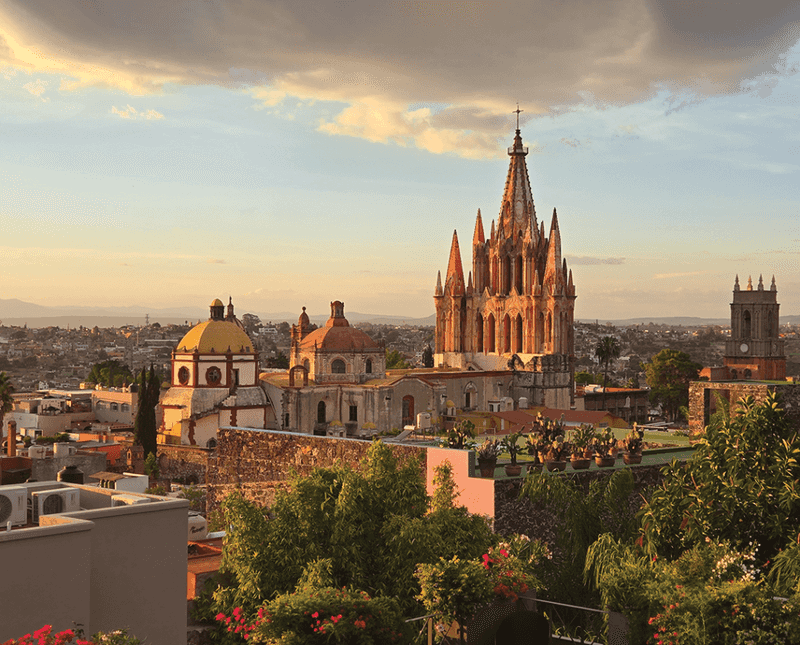
Pink spires pierce the sky as the sun sets over this colonial gem in Mexico’s highlands. San Miguel de Allende consistently tops travel lists for good reason—its cobblestone streets lead to perfectly preserved Spanish-Baroque architecture and vibrant markets bursting with local crafts.
The city’s heart beats around La Parroquia cathedral, whose dramatic façade dominates the main plaza. Visitors wander between art galleries housed in ochre and terracotta buildings, while rooftop bars offer panoramic views of this UNESCO World Heritage site.
Local festivals fill the calendar year-round, infusing the city with music and color that complement its already rich cultural tapestry.
2. Chiang Mai, Thailand
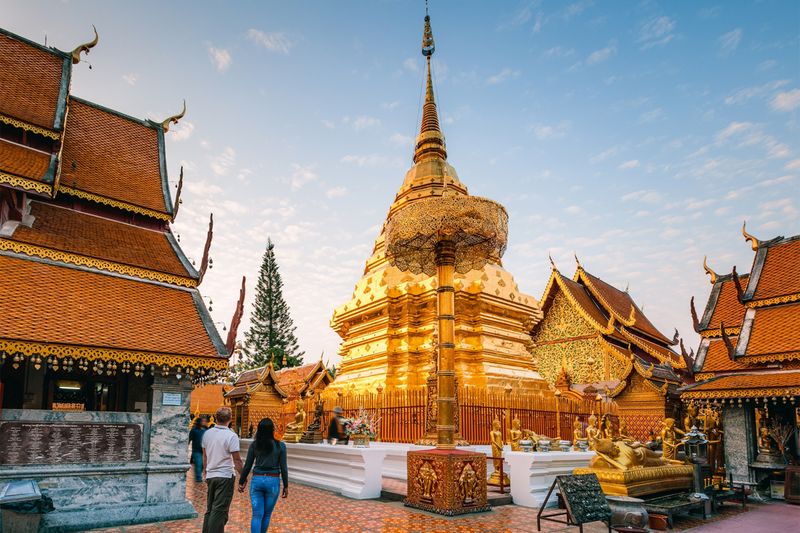
Ancient meets modern in Thailand’s northern cultural capital. Nestled among misty mountains, Chiang Mai enchants with its perfect balance of serene historic temples and vibrant street culture.
Within the crumbling walls of the Old City, centuries-old chedis (stupas) rise above monasteries where orange-robed monks begin their days at dawn. Just steps away, trendy cafés and boutique hotels add contemporary flair to traditional Lanna architecture.
Night markets burst with energy as vendors sell everything from handcrafted textiles to steaming bowls of khao soi curry noodles. The laid-back charm and rich traditions make Chiang Mai an endlessly fascinating destination that keeps travelers returning year after year.
3. Tokyo, Japan
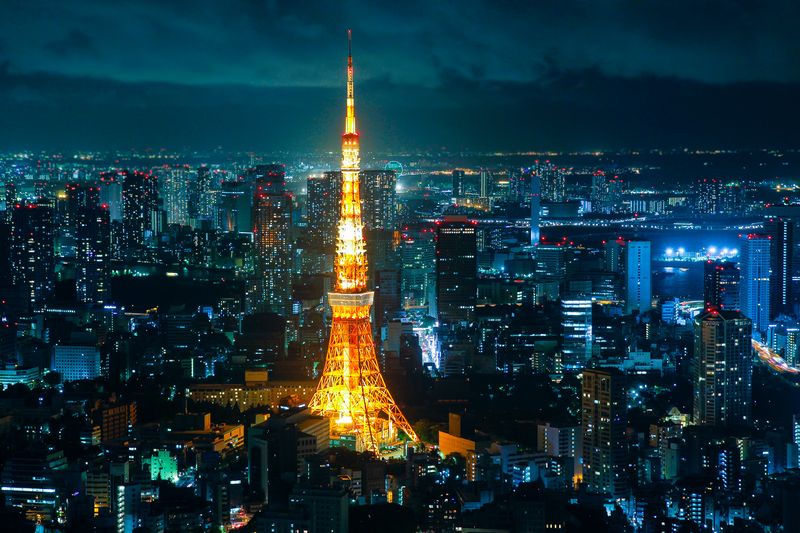
Neon skyscrapers pierce the clouds while ancient shrines nestle between them—Tokyo’s contradictions are its greatest strength. This metropolis seamlessly blends cutting-edge technology with centuries-old traditions, creating a visual feast unlike anywhere else.
Morning might find you at the serene Meiji Shrine, surrounded by forest in the heart of the city. By afternoon, you’re navigating the futuristic skyline of Shinjuku or the fashion-forward streets of Harajuku.
Tokyo boasts more Michelin-starred restaurants than any city on Earth, yet some of its most memorable meals happen in tiny ramen shops hidden down narrow alleys. Clean, safe, and endlessly fascinating, Tokyo rewards those who embrace its beautiful contrasts.
4. Bangkok, Thailand
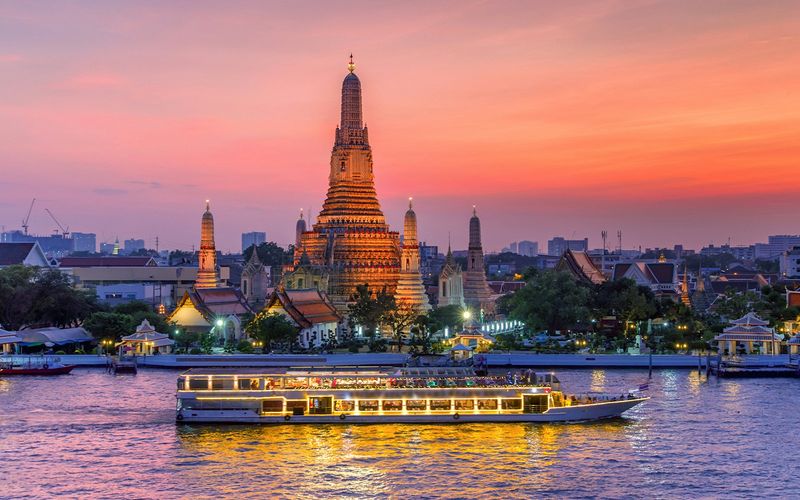
“City of Angels” to locals, Bangkok assaults the senses in the most magnificent way. Golden spires of royal temples glitter in the tropical sun while longtail boats zip along the Chao Phraya River, creating a constantly moving tableau.
By day, the Grand Palace dazzles with its intricate mosaics and emerald Buddha. As evening falls, rooftop bars offer panoramic views of a skyline where ancient and modern architecture create a striking silhouette.
Bangkok’s soul lies in its contrasts—serene monks collecting alms at dawn near streets that pulsed with nightlife hours earlier; floating markets selling tropical fruits beside luxury malls. The city embraces its beautiful chaos, inviting visitors to do the same.
5. Jaipur, India
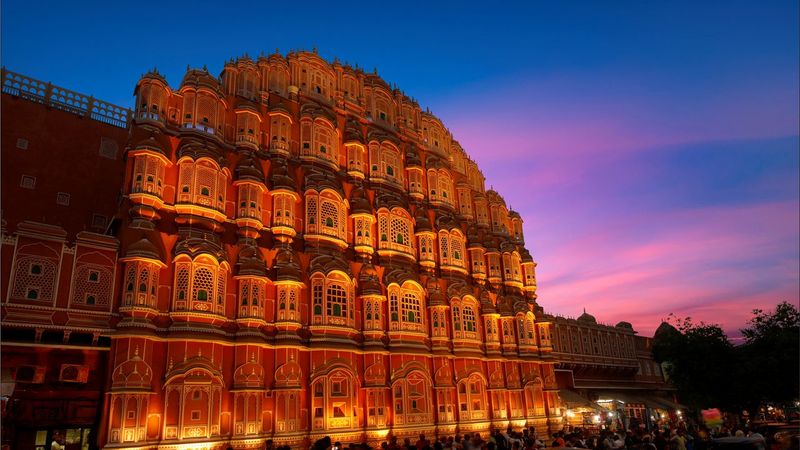
The Pink City earns its nickname each evening when the setting sun transforms its sandstone buildings into a rosy spectacle. Founded in 1727, Jaipur presents a masterclass in urban planning with its grid-pattern streets and impressive architectural harmony.
The honeycomb-like Hawa Mahal (Palace of Winds) features 953 small windows designed to allow royal ladies to observe street life unseen. Nearby, the massive Amber Fort crowns a rocky hill, offering spectacular views of Maota Lake and the surrounding Aravalli Range.
Artisans continue centuries-old traditions in bustling markets, hammering jewelry and block-printing textiles. Jaipur balances its regal heritage with everyday Indian life, creating a living museum where elephants might share roads with motorbikes.
6. Hoi An, Vietnam
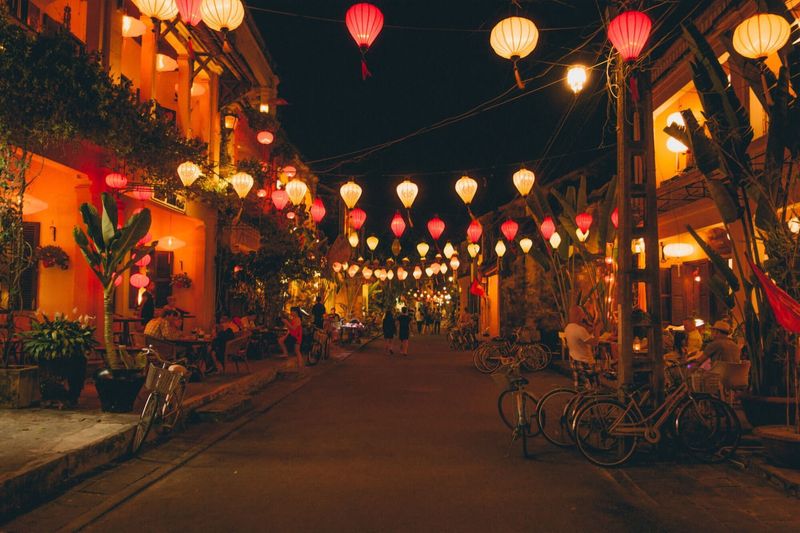
Time stands still in this ancient trading port where hundreds of silk lanterns cast their warm glow over mustard-yellow buildings each night. Hoi An’s remarkably preserved Ancient Town showcases a fascinating architectural fusion—Chinese temples sit beside Japanese merchant houses and European-influenced structures.
The 16th-century Japanese Covered Bridge, adorned with monkey and dog statues representing the years of its construction, has become the town’s symbol. Nearby, talented tailors continue a centuries-old tradition, creating bespoke clothing in just 24 hours.
Beyond the UNESCO-protected center, rice paddies stretch to the horizon and palm-fringed beaches beckon just 5km away. Hoi An’s intimate scale and living heritage create an atmosphere that feels like stepping into a watercolor painting.
7. Mexico City, Mexico
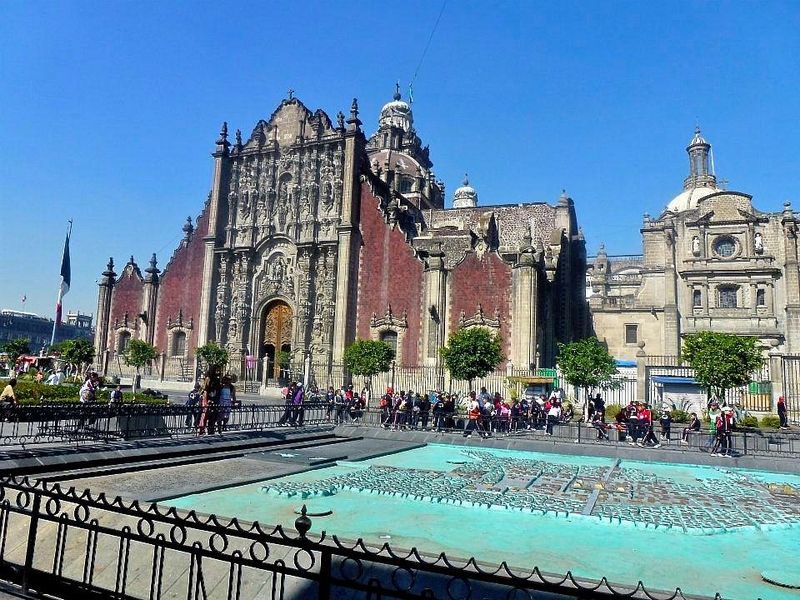
A metropolis of 22 million that somehow feels intimate—Mexico City defies expectations at every turn. Ancient Aztec ruins emerge from the urban landscape at Templo Mayor, standing in the shadow of the Metropolitan Cathedral’s baroque towers.
Tree-lined boulevards in La Condesa and Roma Norte neighborhoods could be mistaken for Paris, while the floating gardens of Xochimilco preserve agricultural techniques from pre-Hispanic times. Diego Rivera’s murals tell Mexico’s story across public buildings, most dramatically in the National Palace.
At 7,350 feet above sea level, the quality of light here is magical—golden hour bathes the city in warm hues that highlight its architectural diversity. Mexico City’s renaissance continues as world-class museums, innovative restaurants, and vibrant street life make it Latin America’s cultural powerhouse.
8. Kyoto, Japan
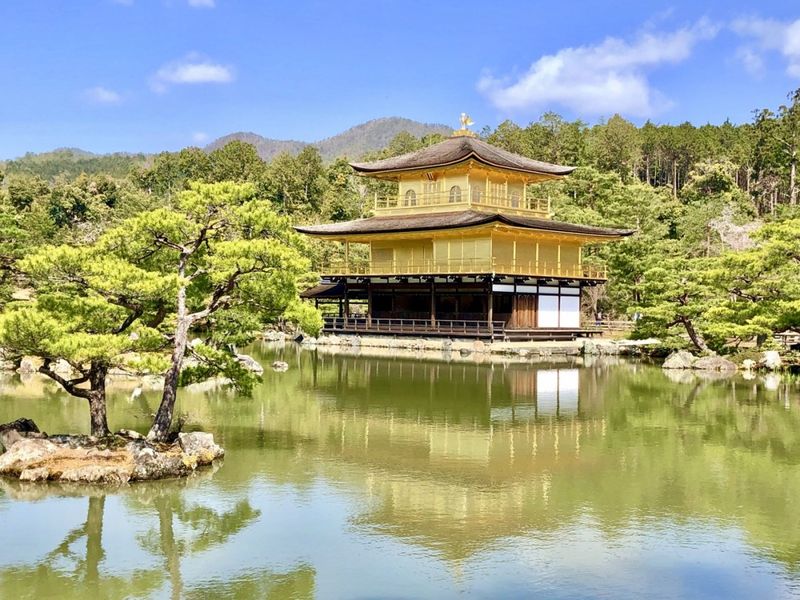
For over a millennium, Kyoto served as Japan’s imperial capital, leaving a legacy of 1,600 Buddhist temples, 400 Shinto shrines, and 17 UNESCO World Heritage Sites. Unlike Tokyo’s vertical sprawl, Kyoto unfolds horizontally, with low-rise wooden buildings framed by forested mountains on three sides.
The golden pavilion of Kinkaku-ji appears to float on its reflecting pond, while thousands of vermilion torii gates create a tunnel-like path at Fushimi Inari Shrine. Cherry blossoms transform the Philosopher’s Path into a pink wonderland each spring.
Geisha still practice ancient arts in the Gion district, and traditional tea ceremonies continue in centuries-old teahouses. Modern Kyoto exists alongside these traditions, creating a city where Japan’s heart and soul remain beautifully preserved.
9. Ubud, Indonesia
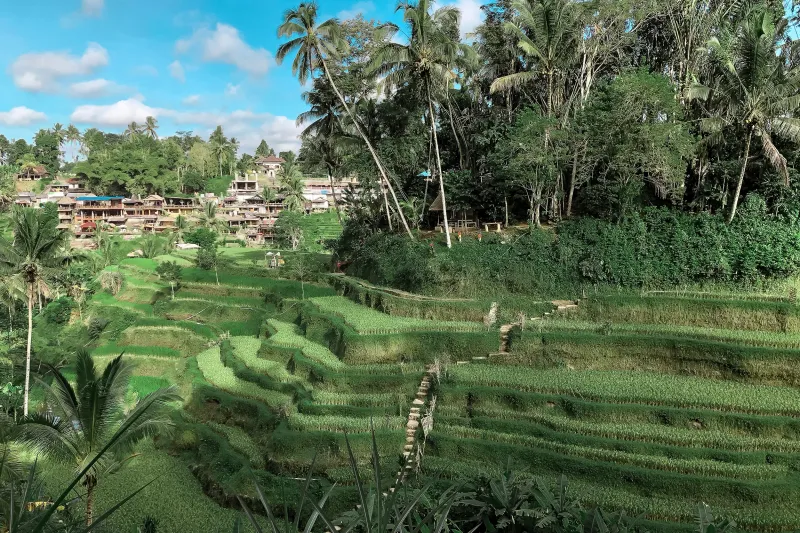
“Pure magic” is how travelers often describe this artistic heart of Bali. Surrounded by emerald rice terraces that cascade down hillsides like giant steps, Ubud offers a spiritual counterpoint to the island’s beach destinations.
Hindu temples hide within lush forests where monkeys swing through the canopy. The Sacred Monkey Forest Sanctuary provides a glimpse of this harmonious relationship between nature, animals, and Balinese religious life.
Artists have flocked here for decades, drawn by the ethereal light that filters through palm fronds and the rich cultural traditions. Yoga studios and organic cafés now complement traditional dance performances and wood-carving workshops. Despite increasing popularity, Ubud maintains its soul—a place where daily offerings of flower petals remind visitors of the sacred in everyday life.
10. Cusco, Peru
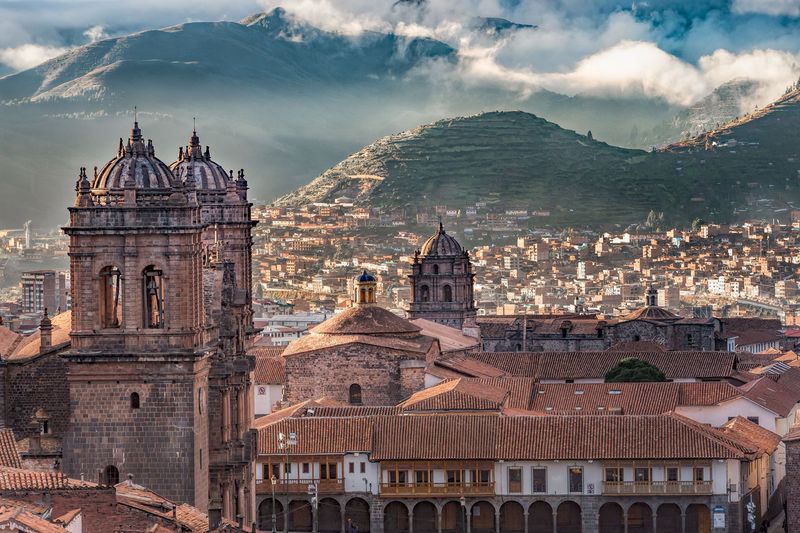
Perched at a breathtaking 11,152 feet in the Andes, the former capital of the Inca Empire literally sits among the clouds. Cusco’s perfect stonework foundations have survived five centuries of earthquakes—testimony to Incan engineering that Spanish colonizers built upon with baroque churches and arcaded plazas.
The imposing walls of Sacsayhuamán fortress overlook terracotta rooftops from a nearby hillside. In the historic center, narrow cobblestone streets lead to the magnificent Plaza de Armas, where Quechua women in colorful traditional dress sell handicrafts.
Though most visitors use Cusco as a gateway to Machu Picchu, the city deserves appreciation in its own right. Its unique architecture, where Spanish colonial buildings rest atop precision-cut Inca walls, creates a living timeline of Peruvian history.
11. Florence, Italy
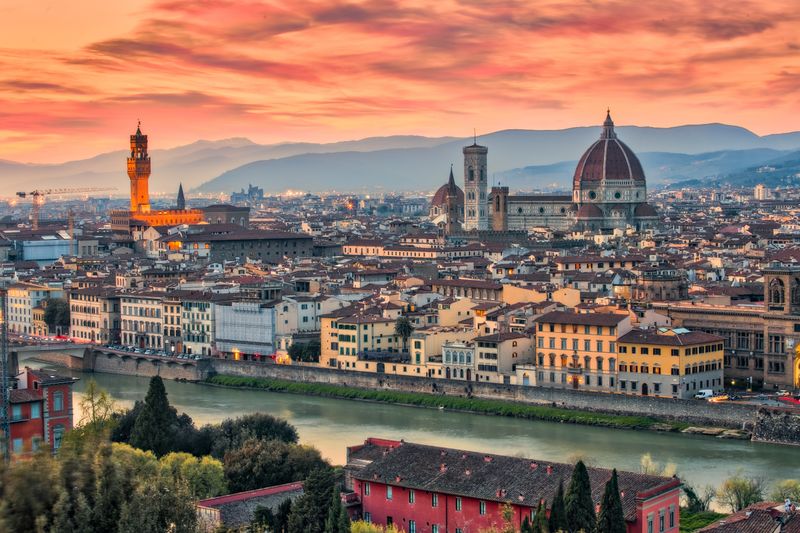
Birthplace of the Renaissance, Florence packs more artistic masterpieces per square foot than perhaps anywhere on Earth. Brunelleschi’s terracotta dome dominates the skyline, an engineering marvel that forever changed architecture when completed in 1436.
Across the Arno River, connected by the shop-lined Ponte Vecchio, the Oltrarno district reveals artisan workshops where age-old crafts continue. Leather workers, gilders, and paper marblers practice traditions passed down through generations.
Beyond the tourist-filled Uffizi Gallery and Accademia (home to Michelangelo’s David), locals enjoy simple pleasures—morning espresso at centuries-old cafés, evening passeggiata strolls, and sunset views from Piazzale Michelangelo where the city’s Renaissance profile spreads before you like a living painting. Florence remains a perfectly preserved art history lesson you can walk through.
12. Seville, Spain
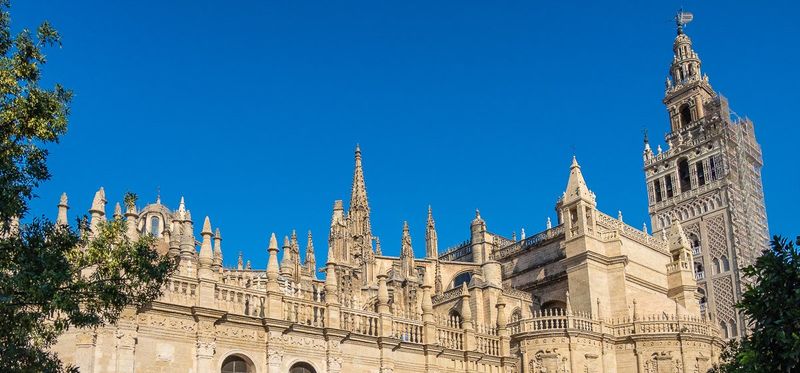
Orange blossom perfumes the air each spring in this passionate Andalusian capital. Seville’s architectural splendors tell the story of its complex history—from the Moorish-influenced Alcázar palace with its intricate tilework to the world’s largest Gothic cathedral crowned by the Giralda bell tower, originally built as a minaret.
Flamenco was born in these narrow streets, and impromptu performances still erupt in the squares of the Santa Cruz quarter. The modern Metropol Parasol (locally called Las Setas—”The Mushrooms”) provides a striking contemporary counterpoint to the city’s ancient treasures.
Sevillanos embrace life’s pleasures with religious devotion—lingering over tapas, joining Holy Week processions, and celebrating spring at the colorful Feria de Abril. The unhurried pace matches the subtropical climate, making Seville Spain’s most seductive city.
13. Granada, Spain
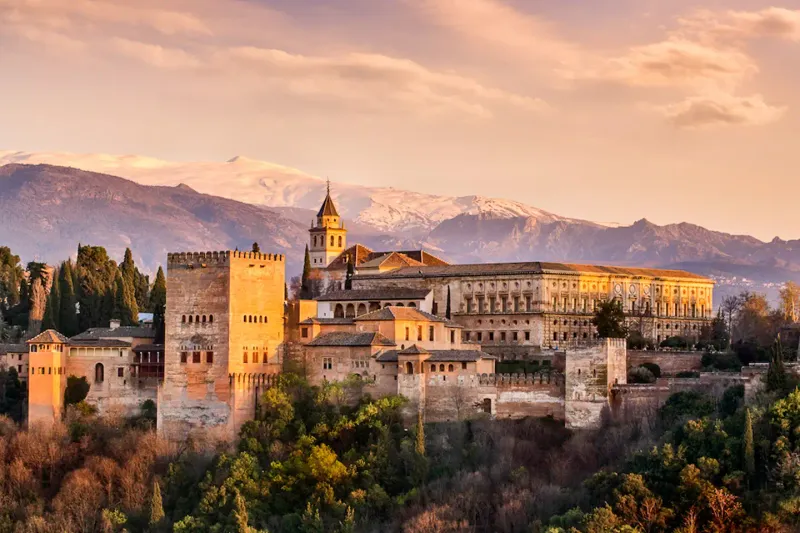
Snow-capped Sierra Nevada mountains provide a dramatic backdrop for this Andalusian jewel. Granada’s crown glory—the Alhambra palace complex—represents the pinnacle of Islamic architecture in Europe, its delicate arches and intricate stucco work creating spaces of mathematical perfection.
Water features prominently throughout the Generalife gardens, where fountains and channels demonstrate the Moorish mastery of hydraulics. Across the valley, the whitewashed houses of the Albaicín quarter climb the hillside, their rooftop terraces offering perfect sunset views of the Alhambra’s reddish walls.
Granada maintains its authentic Spanish character despite tourism. University students keep the tapas bars lively, while in the Sacromonte caves, flamenco zambra performances continue a tradition born when Muslims, Jews, and Romani people sought refuge here after the Christian reconquest.
14. Istanbul, Turkey
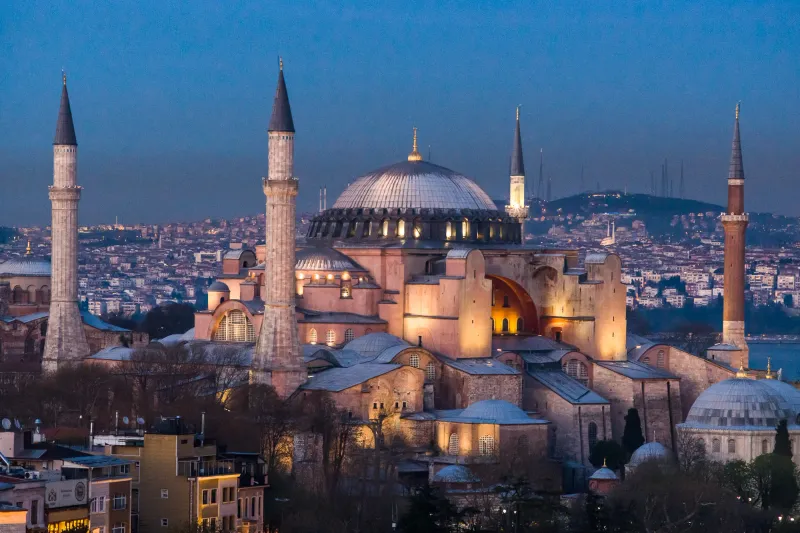
The only city spanning two continents, Istanbul bridges East and West across the sparkling Bosphorus Strait. Minarets punctuate the skyline, calling the faithful to prayer five times daily from magnificent Ottoman mosques like the Blue Mosque with its six slender towers.
Just steps away stands Hagia Sophia, a 1,500-year-old architectural marvel that served as both Byzantine cathedral and Ottoman mosque before becoming a museum. Its massive dome seems to float above a space filled with golden mosaics.
Istanbul’s sensory delights extend beyond architecture—the fragrant spice bazaar, strong Turkish coffee sipped from tiny cups, ferry rides between continents where dolphins sometimes race alongside. Despite its 15 million residents, the city maintains a surprising number of tranquil corners, like the Princess Islands where horse-drawn carriages replace cars.
15. Siem Reap, Cambodia

More than just a gateway to Angkor’s temples, Siem Reap has blossomed into a destination worthy of extended stays. French colonial and Chinese-style architecture line the riverfront, where paper lanterns illuminate outdoor cafés as evening falls.
Just minutes from town, the magnificent temples of Angkor showcase the artistic pinnacle of the Khmer Empire. Ta Prohm’s stone towers emerge from strangler fig roots, while Bayon’s 216 serene stone faces smile enigmatically from every angle.
The crown jewel remains Angkor Wat—the world’s largest religious monument—whose five lotus-shaped towers are reflected in lily ponds at sunrise. After temple-hopping, visitors return to Siem Reap’s bustling Pub Street or the more sophisticated Kandal Village area, where social enterprises support local communities through responsible tourism.
16. Cape Town, South Africa
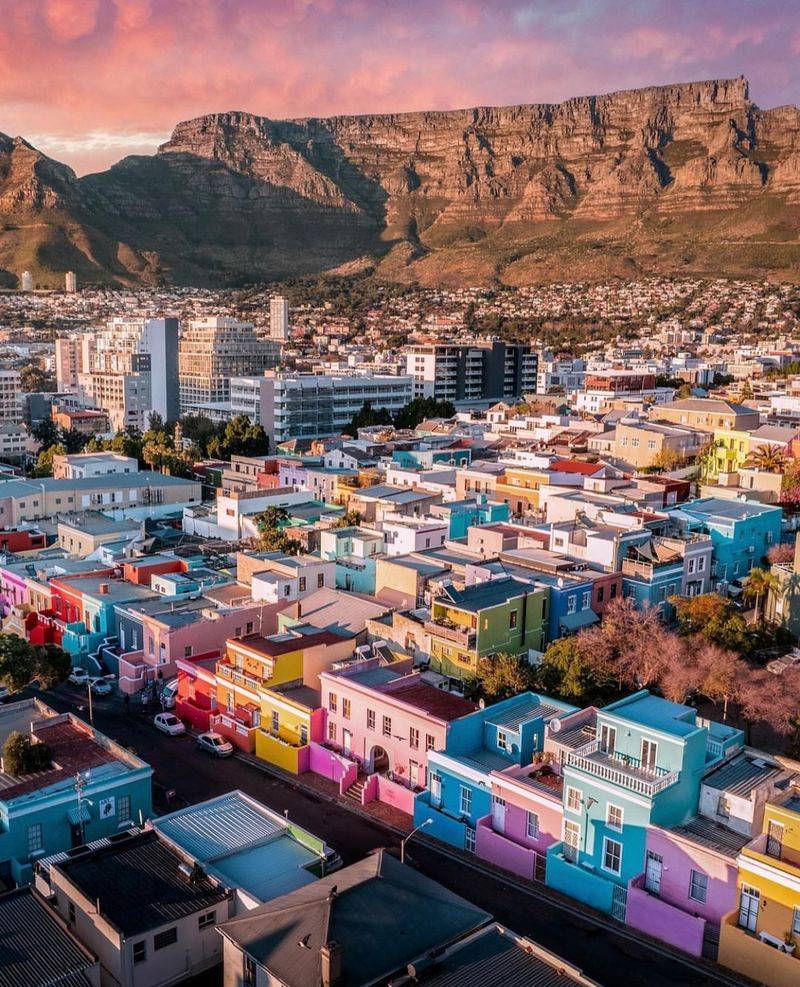
Dramatic topography defines this city where flat-topped Table Mountain rises 3,500 feet above a sparkling coastline. The mountain’s ever-changing “tablecloth” of clouds creates a constantly shifting backdrop for the colorful buildings below.
Bo-Kaap’s rainbow-hued houses reflect the area’s Cape Malay heritage, their vivid facades dating to when formerly enslaved people were allowed to paint their leased homes. Along the Victoria & Alfred Waterfront, a working harbor has transformed into a vibrant entertainment district.
Just outside the city, the Cape Winelands produce world-class vintages amid stunning scenery. Penguins waddle along Boulders Beach while Cape Point’s rugged cliffs mark the southwestern tip of Africa. Few cities blend cosmopolitan energy and natural wonders as seamlessly as Cape Town does.
17. Rome, Italy
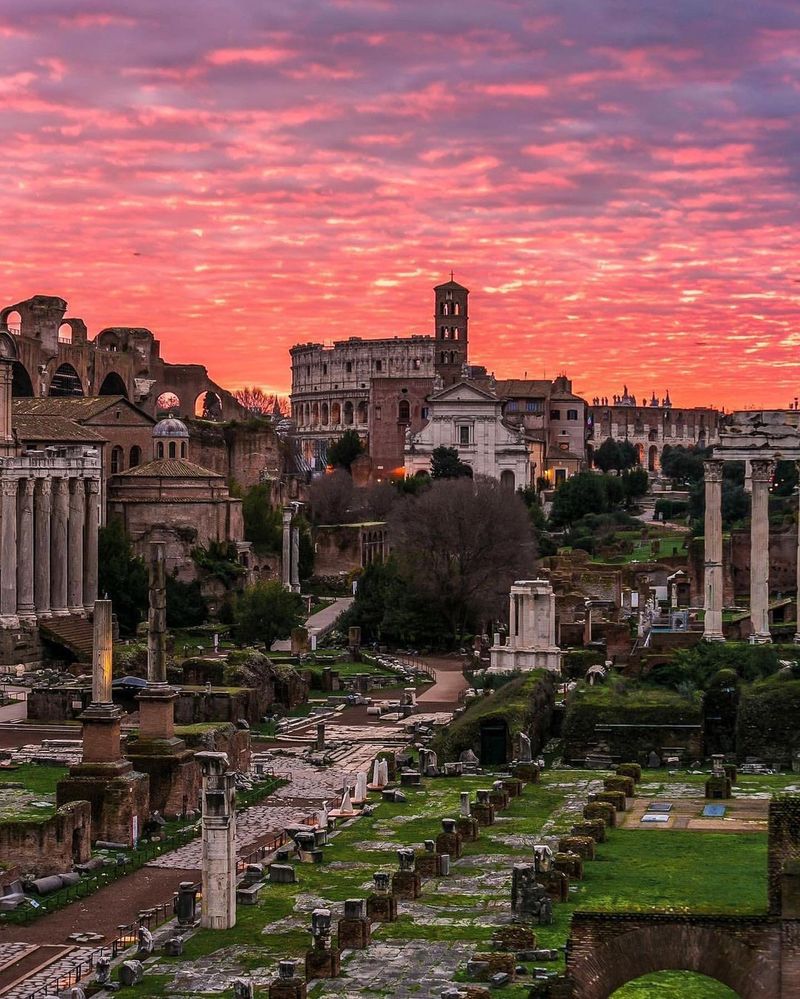
The Eternal City layers 28 centuries of history into one magnificent open-air museum. Ancient Romans built on a scale meant to last millennia—the Colosseum’s massive arches still stand after 2,000 years, while the Pantheon’s unreinforced concrete dome remains the world’s largest.
Renaissance and Baroque periods added artistic treasures around every corner. Bernini’s fountains animate piazzas where locals gather for evening passeggiata strolls, and Michelangelo’s Sistine Chapel ceiling continues to awe visitors to Vatican City, the world’s smallest sovereign state.
Romans live amid this extraordinary heritage with characteristic nonchalance. Trattorias serve perfect pasta on cobblestone streets where Julius Caesar once walked. The golden afternoon light that bathes travertine facades explains why Rome has inspired artists for centuries—it’s a city where beauty feels effortless.
18. Agra, India
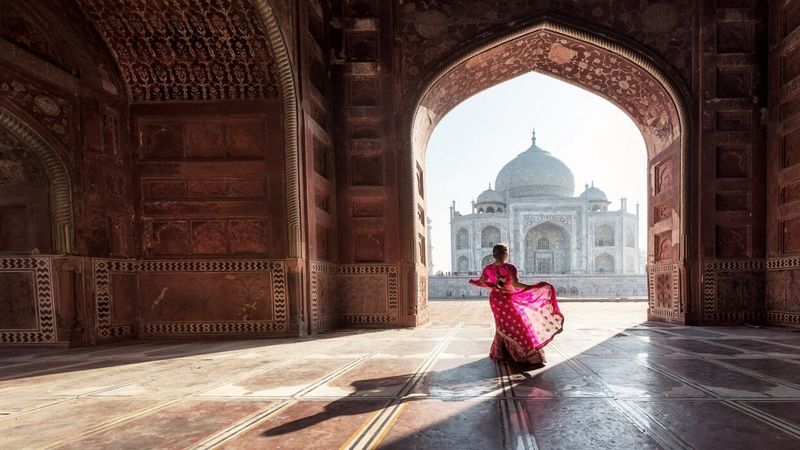
While many cities boast architectural masterpieces, Agra possesses what many consider the most beautiful building on Earth. The Taj Mahal’s perfect symmetry and luminous white marble—which changes hue throughout the day—represents the pinnacle of Mughal architecture and a monument to eternal love.
Emperor Shah Jahan commissioned this mausoleum for his beloved wife Mumtaz Mahal, who died in childbirth. Twenty thousand artisans spent 22 years completing it, inlaying precious stones in intricate floral patterns that catch the light like jewels.
Beyond the Taj, Agra offers other Mughal splendors—the massive red sandstone Agra Fort where Shah Jahan spent his final years as prisoner of his son, gazing at his masterpiece across the Yamuna River. The “Baby Taj” (Itimad-ud-Daulah’s tomb) showcases delicate marble inlay work on a more intimate scale.
19. Porto, Portugal
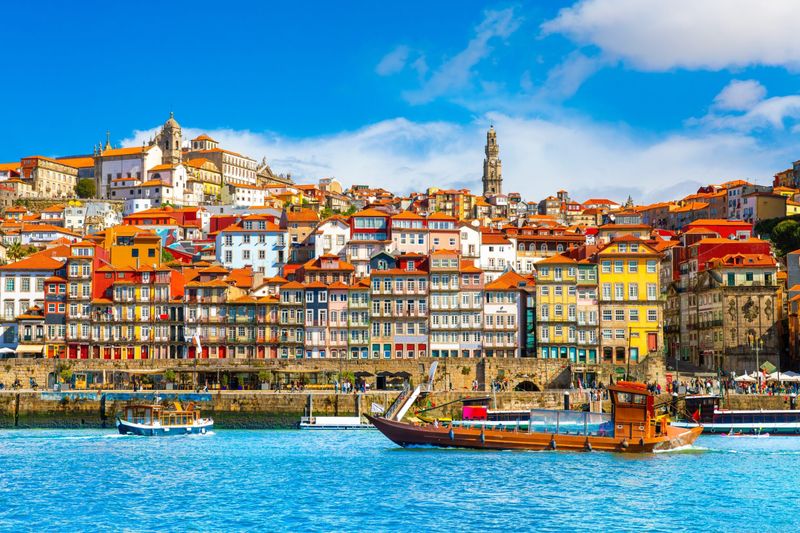
Tumbling down steep hillsides to meet the Douro River, Porto presents a timeworn beauty that feels refreshingly authentic. Colorful medieval houses stack like building blocks along narrow lanes, their laundry fluttering from wrought-iron balconies.
The iconic Dom Luís I Bridge—a two-level metal arch designed by a student of Gustave Eiffel—connects Porto to Vila Nova de Gaia, where historic port wine cellars offer tastings with panoramic views. Baroque churches showcase Portugal’s wealth from its colonial era, their interiors gleaming with gold leaf and intricate azulejo tile panels.
Contemporary landmarks like Rem Koolhaas’ Casa da Música concert hall and the Serralves Foundation demonstrate Porto’s creative present. The city’s melancholic charm—captured in the untranslatable word saudade—resonates through fado music played in riverside taverns as evening mist rolls in from the Atlantic.
20. Victoria, Canada
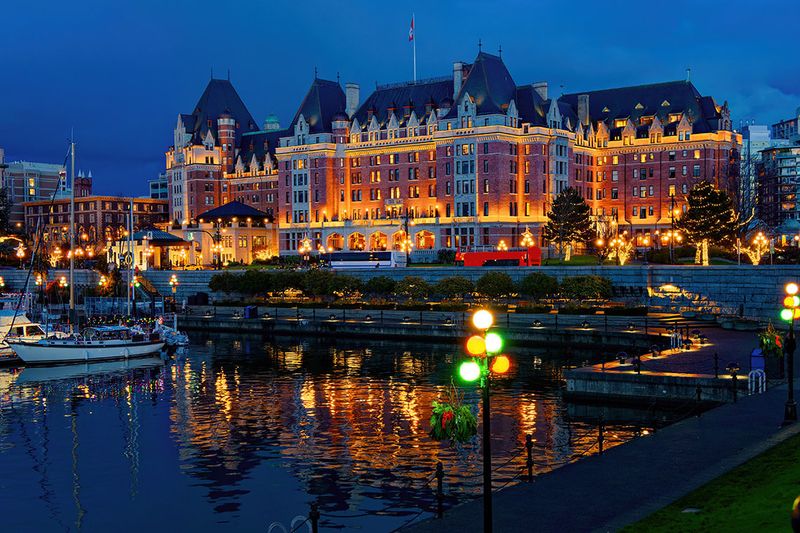
British Columbia’s capital retains an old-world charm rare in North America. Perched on Vancouver Island’s southern tip, Victoria embraces its British heritage with double-decker buses, afternoon tea at the ivy-covered Fairmont Empress Hotel, and the Parliament Buildings illuminated by thousands of lights each evening.
The Inner Harbour buzzes with seaplanes landing alongside sailboats and water taxis. Street performers entertain crowds along the waterfront promenade, where the Pacific Ocean provides a sparkling backdrop.
Just outside downtown, Butchart Gardens transforms a former limestone quarry into 55 acres of floral splendor. Victoria’s mild climate allows palm trees to thrive alongside English-style rose gardens. The city’s walkable scale and architectural preservation create a European atmosphere in this Pacific Northwest gem.
21. San Sebastián, Spain

Nestled in a perfect shell-shaped bay, San Sebastián (Donostia in Basque) combines Belle Époque elegance with world-class culinary prowess. La Concha Beach forms a golden crescent between two hills, with Santa Clara Island providing a picturesque focal point in the bay’s center.
Nineteenth-century buildings with wrought-iron balconies line the promenade, a legacy from when Spanish royalty made this their summer retreat. Monte Igueldo offers panoramic views from its summit, reached by a funicular railway dating to 1912.
San Sebastián’s greatest claim to fame is its food culture—the Old Town contains the world’s highest concentration of Michelin-starred restaurants per square meter. Even more beloved are the pintxo bars, where bite-sized culinary masterpieces accompany txakoli, the local slightly sparkling white wine poured dramatically from height to aerate it.
22. Salzburg, Austria
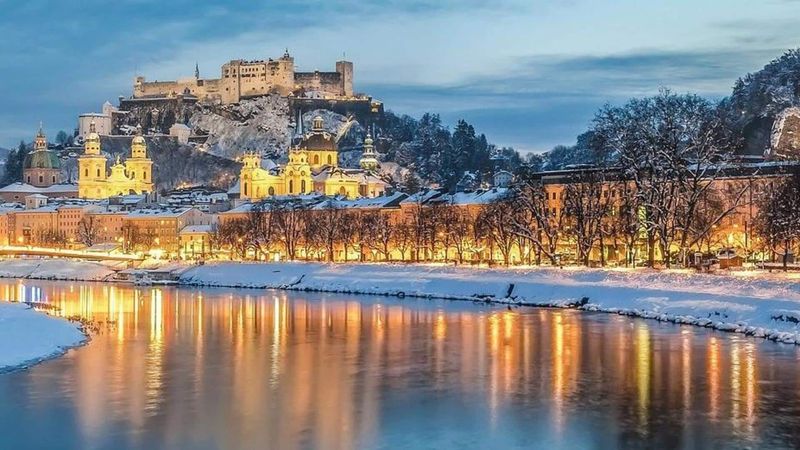
Mozart’s birthplace resembles a living stage set nestled between the Salzach River and steep hills crowned by Hohensalzburg Fortress. The composer’s spirit infuses Salzburg, from concerts in baroque palaces to chocolate “Mozart balls” sold in confectioneries throughout the Altstadt (Old Town).
The historic center’s harmonious architecture earned UNESCO recognition—a sea of copper-green domes, ornate church spires, and pastel-colored buildings with wrought-iron signs marking medieval guild affiliations. Mirabell Gardens showcases classical formal landscaping, recognizable from “The Sound of Music,” which used Salzburg as its backdrop.
Alpine scenery frames the city, visible from numerous vantage points. During Christmas season, traditional markets fill the squares with the scent of glühwein (mulled wine) and the sound of carols—a magical atmosphere that transforms this musical city into a winter wonderland.
23. Lucerne, Switzerland
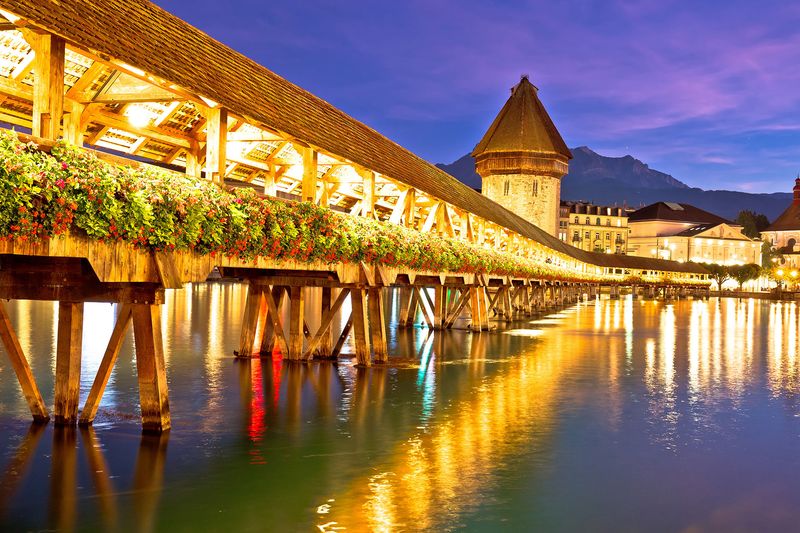
Fairytale-like Lucerne nestles between an impossibly blue lake and snow-capped mountains in the heart of Switzerland. The city’s iconic wooden Chapel Bridge (Kapellbrücke) dates to the 14th century, its covered walkway decorated with triangular paintings depicting local history and adorned with flower boxes in summer.
Medieval watchtowers and colorfully frescoed buildings encircle the car-free old town. The sorrowful Lion Monument—a dying lion carved directly into sandstone—moved Mark Twain to describe it as “the most mournful and moving piece of stone in the world.”
Mount Pilatus and Rigi provide dramatic backdrops and easy day trips via scenic boat-and-cogwheel railway journeys. Lake Lucerne’s crystal waters reflect the surrounding peaks, while Belle Époque steamers cruise past villages clinging to steep shorelines.
24. Dubrovnik, Croatia
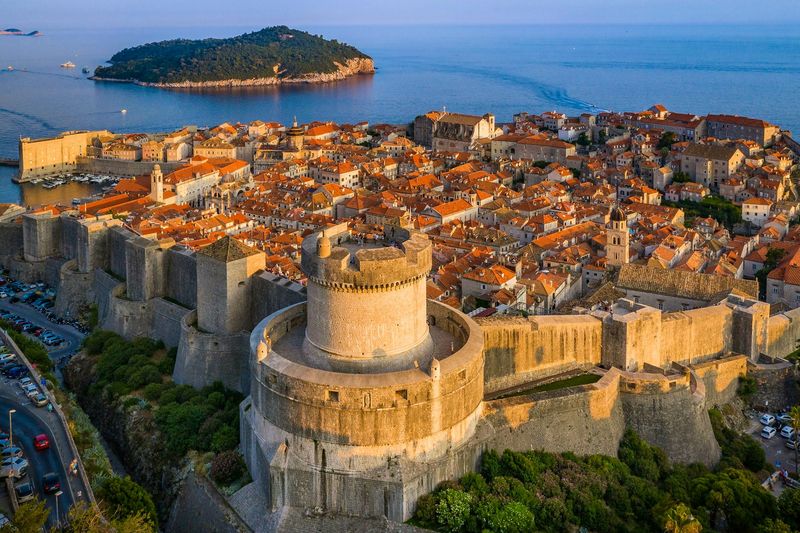
Rising dramatically from the Adriatic Sea, Dubrovnik’s massive stone walls have protected this maritime republic for centuries. The entire Old Town is a UNESCO World Heritage site, its limestone streets polished to a marble-like sheen by millions of footsteps over the ages.
Walking the 1.2-mile circuit atop the 13th-century walls offers breathtaking views: on one side, the terracotta rooftops and church domes of the perfectly preserved medieval city; on the other, the impossibly blue Adriatic dotted with green islands. Banje Beach sits just outside the eastern gate, providing a stunning foreground to views of the walled city.
Despite damage during the 1990s Yugoslav wars (now meticulously restored) and Game of Thrones fame bringing crowds, Dubrovnik maintains its timeless appeal. Early mornings and evenings reveal the city’s true magic, when sunlight plays across ancient stone and local life reclaims the limestone lanes.
25. Singapore, Singapore
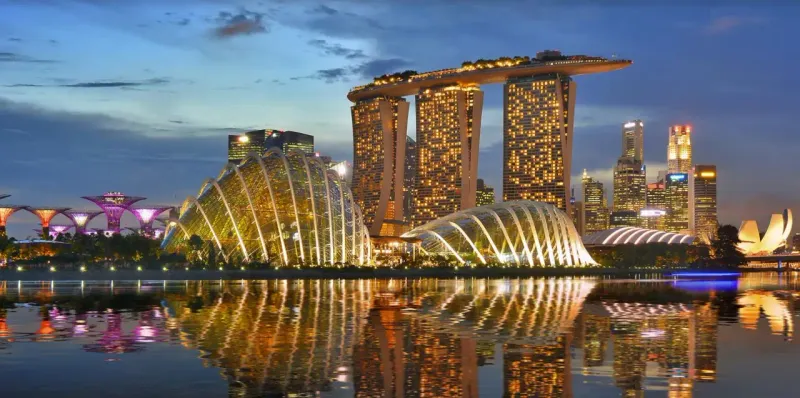
A masterclass in urban planning, Singapore transforms limited space into a visionary city-state where futuristic architecture meets abundant greenery. The iconic Marina Bay Sands hotel—three towers supporting a ship-like SkyPark with an infinity pool—has redefined the skyline.
Gardens by the Bay’s Supertrees rise up to 16 stories, their vertical gardens illuminated in spectacular light shows each evening. These technological marvels stand alongside traditional shophouses in Chinatown, colonial buildings in the Civic District, and colorful temples in Little India.
Singapore’s multicultural heritage shapes its vibrant food scene, from sophisticated restaurants to beloved hawker centers where $5 can buy Michelin-starred chicken rice. Despite being one of the world’s most densely populated countries, Singapore maintains 47% green cover—a truly urban jungle where skyscrapers and rainforest reserves coexist harmoniously.
26. Sydney, Australia
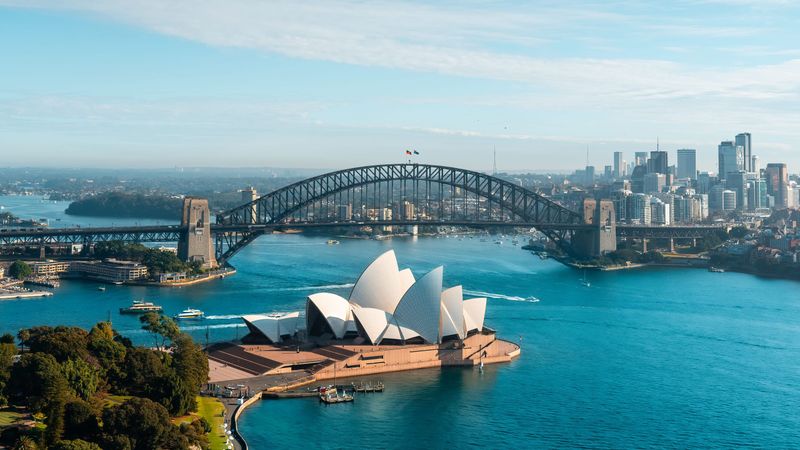
Blessed with one of the world’s most spectacular harbors, Sydney makes the most of its natural advantages. The Opera House’s gleaming white sail-shaped shells and the graceful arch of the Harbour Bridge create an iconic silhouette recognized globally.
Sydney’s coastal location defines its character—locals organize their lives around 100+ beaches, from world-famous Bondi to harbor coves accessible only by ferry. The Bondi to Coogee coastal walk showcases dramatic cliffs, aboriginal rock carvings, and secluded swimming spots.
A former penal colony, Sydney now embraces outdoor living with countless harborside restaurants, open-air cinemas, and the Royal Botanic Garden offering prime views of the Opera House. The city skillfully balances its laid-back beach culture with sophisticated urban offerings and multicultural neighborhoods that reflect waves of immigration from Europe and Asia.
27. Vienna, Austria
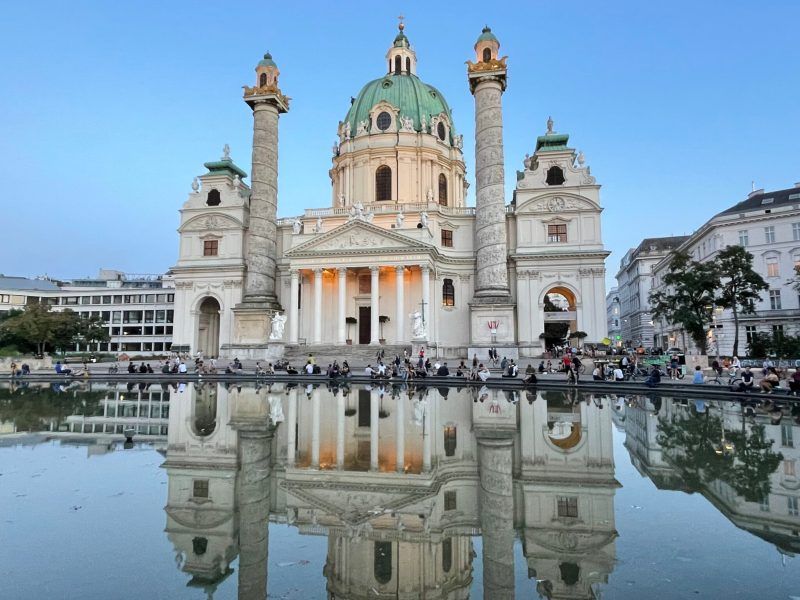
Imperial grandeur defines Vienna’s historic center, where Habsburg palaces and coffee houses set the stage for a city that takes beauty seriously. The Ringstrasse boulevard circles the old town, lined with neo-Renaissance, neo-Gothic, and neo-Baroque buildings constructed during Emperor Franz Joseph’s 19th-century modernization.
Music flows through Vienna’s veins—this is the city of Mozart, Beethoven, and Strauss, where the world-renowned Philharmonic performs in the golden hall of the Musikverein. The Spanish Riding School’s Lipizzaner stallions dance to classical music in a baroque riding hall.
Viennese coffee culture earned UNESCO recognition; locals linger for hours in traditional cafés like Café Central, where marble columns and vaulted ceilings provide a suitably elegant backdrop for Sachertorte and melange coffee. The city consistently ranks as the world’s most livable, blending artistic heritage with modern efficiency.
28. Sarajevo, Bosnia & Herzegovina
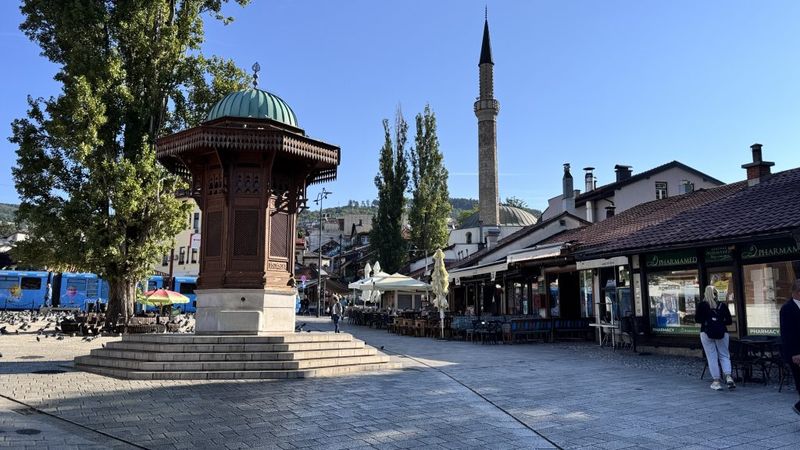
Surrounded by green hills and bisected by the Miljacka River, Sarajevo presents a poignant blend of East and West. Ottoman-era mosques with slender minarets stand near Austro-Hungarian buildings and Orthodox churches, earning the city its nickname “Jerusalem of Europe.”
The rebuilt Old Town (Baščaršija) buzzes with coppersmiths hammering traditional coffee sets, while the scent of grilling ćevapi (minced meat sausages) fills the air. Latin Bridge marks where Archduke Franz Ferdinand’s assassination sparked World War I.
Despite bearing scars from the 1990s siege—the longest in modern warfare—Sarajevo has emerged with remarkable resilience and warmth. The abandoned 1984 Olympic bobsled track on Mount Trebević now features street art, symbolizing how this city transforms even its darkest chapters into something creative and forward-looking.
29. Paris, France
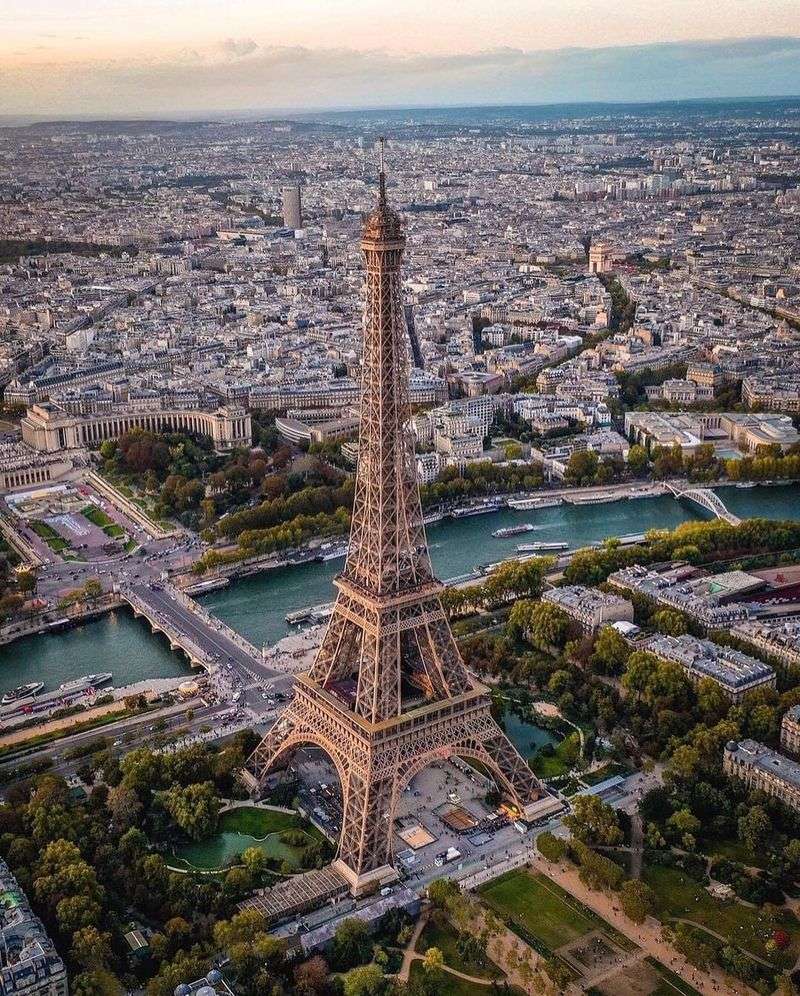
Baron Haussmann’s 19th-century redesign gave Paris its signature look—elegant limestone buildings with mansard roofs lining broad boulevards that converge at monumental squares. This harmonious urban planning creates a cityscape where even ordinary apartment buildings appear museum-worthy.
The Seine River curves through the heart of Paris, its banks lined with booksellers’ green boxes and paths for strolling. Iconic landmarks punctuate the skyline: the Eiffel Tower’s lacy ironwork, Notre-Dame’s Gothic spires (being restored after the 2019 fire), and Sacré-Cœur gleaming white atop Montmartre.
Parisian life centers around small pleasures—morning croissants at corner boulangeries, impromptu picnics in manicured gardens, evening wine at zinc-topped bistro counters. The City of Light earned its nickname both from early street lighting and its role as an intellectual beacon during the Enlightenment.
30. Udaipur, India
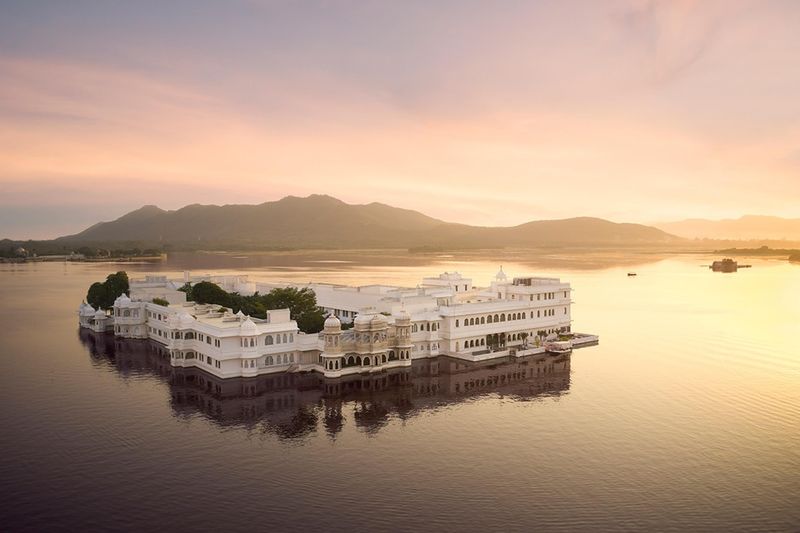
Rising like a mirage from Rajasthan’s arid landscape, Udaipur centers around Lake Pichola, where the gleaming white Lake Palace appears to float on the water’s surface. Founded in 1559, this romantic city served as a setting for James Bond’s “Octopussy,” cementing its reputation for exotic beauty.
The massive City Palace complex stretches along the eastern shore, its façade a blend of Rajput military architecture and Mughal-inspired decorative elements. From its balconies, views encompass the lake, the Aravalli Hills, and the Monsoon Palace perched dramatically on a distant ridge.
Narrow lanes of the old city reveal havelis (mansions) with intricate jharokha balconies and ornately carved doors. Ghats (steps) lead to the water where women wash clothes in colorful saris, creating scenes that haven’t changed for centuries. Udaipur’s timeless beauty transcends India’s chaotic energy.
31. Rio de Janeiro, Brazil
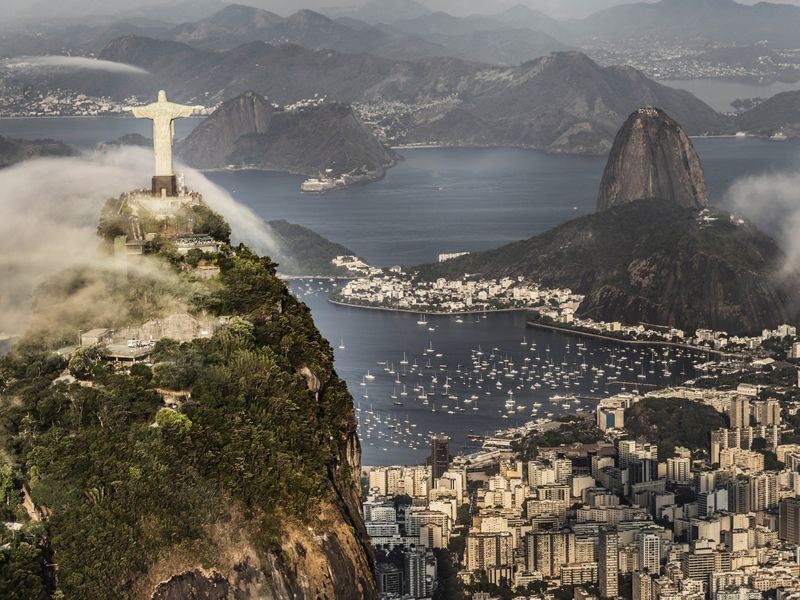
Few cities are blessed with Rio’s dramatic setting—where rainforest-covered mountains plunge into the Atlantic Ocean, creating a playground of beaches, peaks, and urban jungle. The 98-foot Christ the Redeemer statue stands atop Corcovado Mountain, arms outstretched over this magnificent panorama.
Copacabana and Ipanema beaches provide the quintessential Rio experience, their crescent shores filled with bronzed cariocas playing futevolei (foot volleyball) against a backdrop of misty mountains. Sugarloaf Mountain rises like a granite sentinel from the harbor, accessible by cable car for 360-degree views.
The world’s largest urban forest, Tijuca National Park, creates a verdant backdrop for this vibrant metropolis. During Carnival, the whole city transforms into the world’s biggest party—though Rio’s seductive blend of natural beauty, music, and joie de vivre persists year-round.
32. Barcelona, Spain
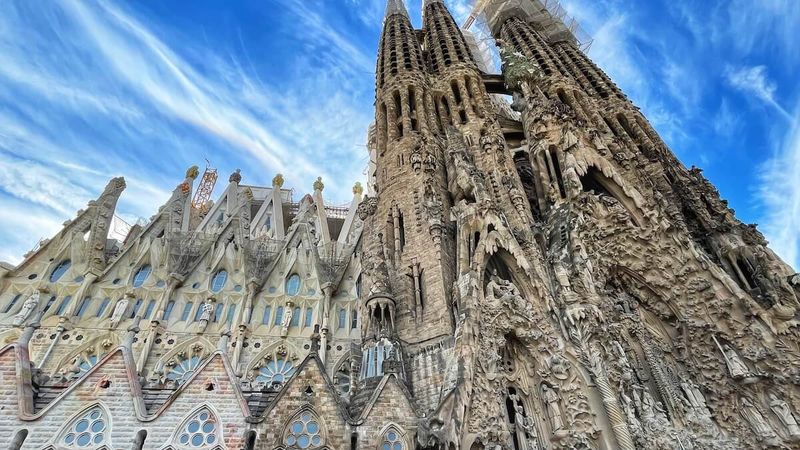
Antoni Gaudí’s fantastical buildings define Barcelona’s unique aesthetic—organic forms that seem to defy architectural conventions. La Sagrada Família basilica, under construction since 1882, represents his magnum opus, its honeycomb-like towers soaring above the city grid.
The Mediterranean provides a sparkling blue edge to this Catalan capital, where beaches and palm-lined promenades offer respite from urban exploration. The Gothic Quarter’s narrow medieval streets contrast with the orderly 19th-century Eixample district, laid out in an innovative grid with chamfered corners creating distinctive octagonal intersections.
Barcelona’s creative energy extends beyond architecture to culinary innovation, design, and nightlife that stretches until dawn. Markets like La Boqueria burst with colorful produce, while neighborhood festivals fill streets with giants, devils, and human towers—traditions that celebrate Catalonia’s distinct cultural identity.
33. New York City, USA
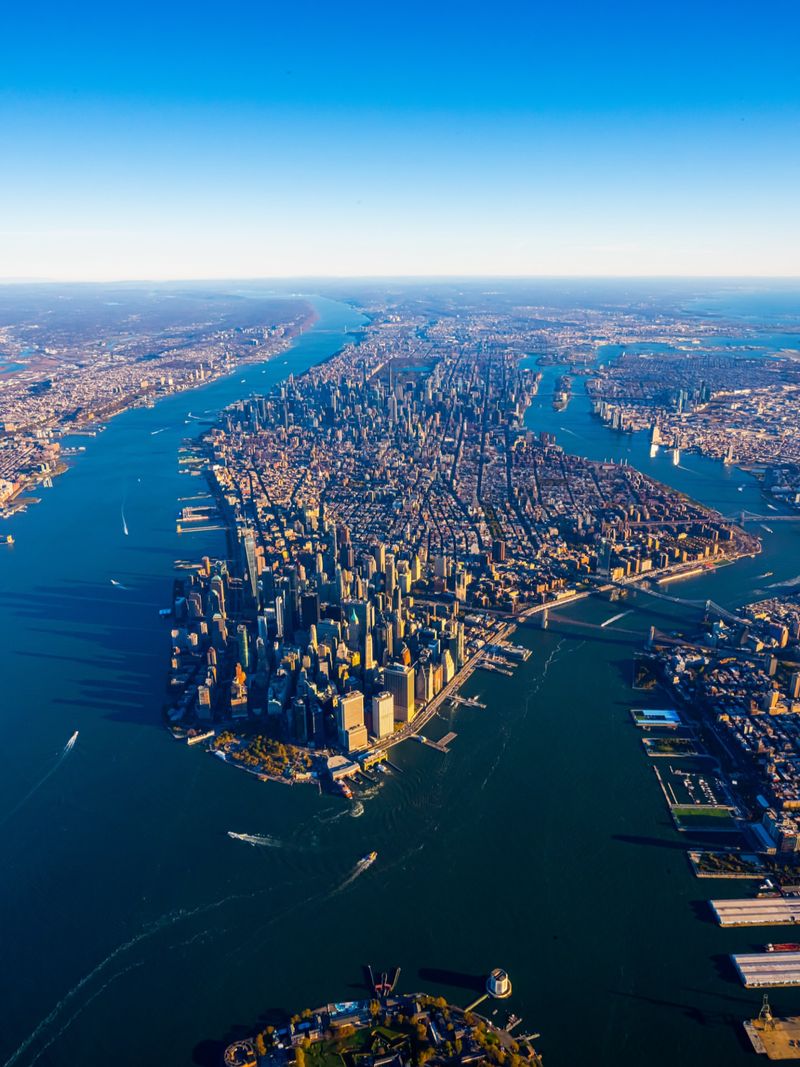
Manhattan’s iconic skyline—a forest of skyscrapers rising from a narrow island—represents American ambition in architectural form. From the Art Deco elegance of the Chrysler Building to the modernist simplicity of the Seagram Building, New York showcases every significant architectural movement of the past century.
Central Park provides an 843-acre green heart amid the urban density, designed by Frederick Law Olmsted as a democratic space where all social classes could mingle. The city’s grid pattern, established in 1811, creates long vistas down avenues lined with diverse structures that document waves of development.
Beyond Manhattan, four boroughs offer their own distinct character—from Brooklyn’s brownstone-lined streets to the globally diverse neighborhoods of Queens. New York’s beauty comes from its constant evolution and energy, a place where cultures collide and reinvent themselves in America’s ultimate urban laboratory.
34. Amsterdam, Netherlands
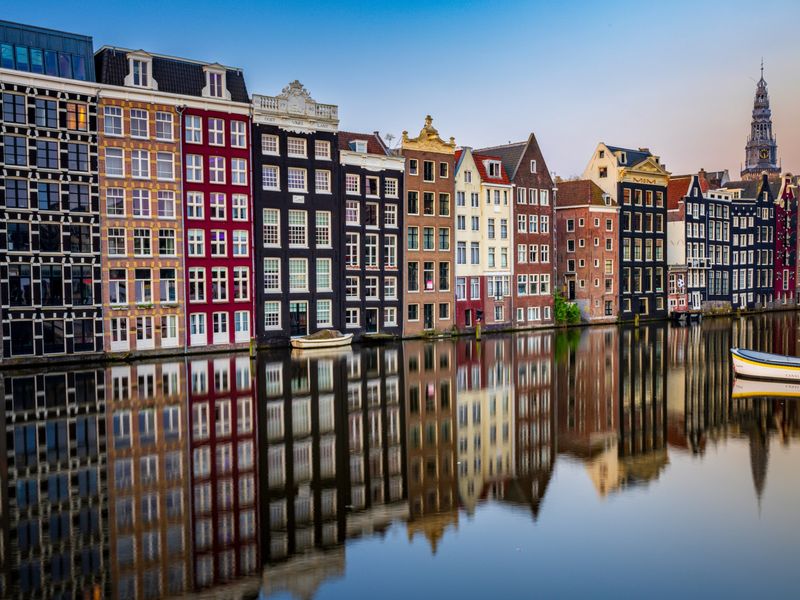
Built on a network of 165 canals, Amsterdam creates a unique urban landscape where water is as important as land. Seventeenth-century merchant houses lean slightly forward (a deliberate design to make hauling goods easier) along waterways crossed by more than 1,200 bridges, many illuminated at night.
The city’s concentric canal rings form a UNESCO World Heritage site, best explored by boat or bicycle—Amsterdam has more bikes than people. Vondelpark provides a green escape where locals picnic and sunbathe during precious sunny days.
Beyond its picturesque appearance, Amsterdam’s beauty lies in its progressive spirit and livability. The compact scale keeps neighborhoods walkable, while architectural preservation balances with cutting-edge design. From the Rijksmuseum’s Dutch Masters to contemporary galleries in reclaimed industrial spaces, Amsterdam continues its tradition as a haven for art and free thinking.
35. Venice, Italy
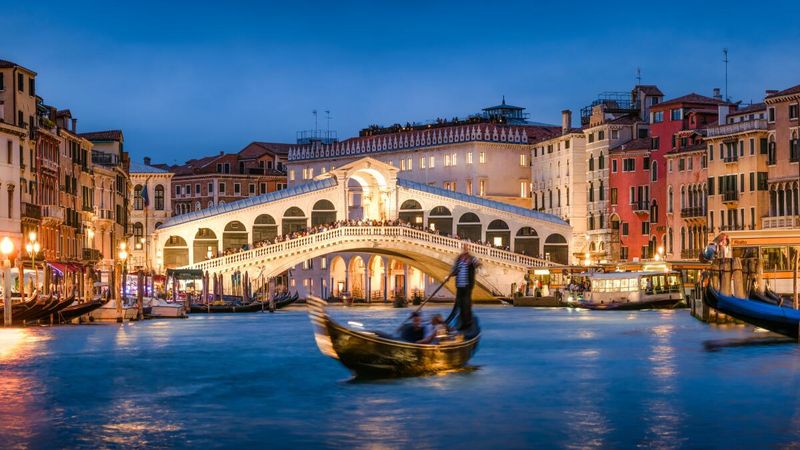
A city without cars, where water replaces roads and boats serve as public transportation—Venice remains humanity’s most improbable urban achievement. Built on millions of wooden pilings driven into a lagoon, this floating city has defied logic for over 1,200 years.
The Grand Canal winds through Venice like a reverse-S, lined with marble palaces whose Byzantine, Gothic, and Renaissance façades tell the story of a maritime trading power. St. Mark’s Square—Napoleon’s “drawing room of Europe”—presents a perfect ensemble of architectural harmony with the Basilica’s golden mosaics and the Doge’s Palace’s delicate Gothic arches.
Beyond the tourist-filled center, quiet neighborhoods like Cannaregio and Dorsoduro reveal the authentic Venice. Washing still hangs between buildings above silent canals, and locals gather at bacari wine bars for cicchetti (Venetian tapas) and spritz cocktails—timeless rituals in a city facing an uncertain future.

